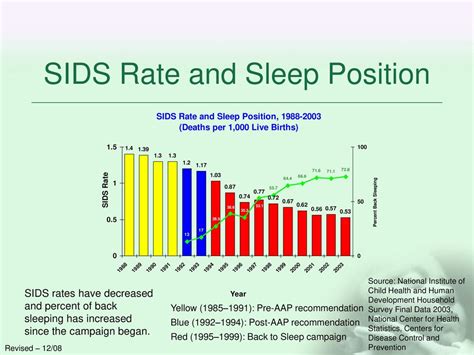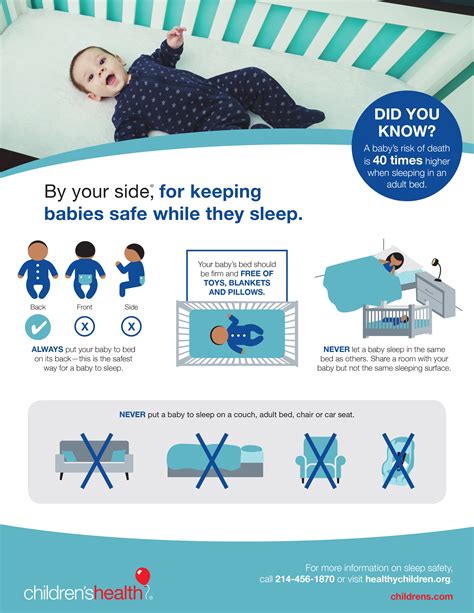Intro
Sudden Infant Death Syndrome (SIDS) affects thousands of families worldwide. Learn about the prevalence of SIDS, its risk factors, and how to reduce the likelihood of this tragic event. Discover the latest statistics, research, and expert advice on SIDS prevention, infant sleep safety, and coping with loss.
Sudden Infant Death Syndrome (SIDS) is a topic that strikes fear into the hearts of many parents. The sudden and unexplained loss of a child is a tragedy that no family should ever have to endure. While SIDS is still not fully understood, research has shed some light on its prevalence and risk factors. In this article, we will delve into the world of SIDS, exploring its definition, statistics, and what parents can do to reduce the risk.

What is Sudden Infant Death Syndrome (SIDS)?
SIDS is the sudden and unexplained death of an infant under one year of age. It is a diagnosis of exclusion, meaning that all other possible causes of death have been ruled out. SIDS is often referred to as "crib death" because it often occurs when the infant is sleeping in their crib. However, this term is misleading, as SIDS can occur anywhere, not just in cribs.
How Common is SIDS?
According to the Centers for Disease Control and Prevention (CDC), SIDS is the leading cause of death among infants between one month and one year of age. In the United States, approximately 3,500 infants die from SIDS each year. This translates to about 1 in 1,500 live births.

Risk Factors for SIDS
While the exact cause of SIDS is still unknown, research has identified several risk factors that increase an infant's likelihood of dying from SIDS. These include:
- Age: Infants under six months of age are at the highest risk for SIDS.
- Sleep position: Infants who sleep on their stomachs or sides are at a higher risk for SIDS.
- Sleep environment: Infants who sleep in a room with a smoker or in a room with a soft surface, such as a pillow or blanket, are at a higher risk for SIDS.
- Premature birth: Infants born prematurely are at a higher risk for SIDS.
- Low birth weight: Infants with a low birth weight are at a higher risk for SIDS.
- Family history: Infants with a family history of SIDS are at a higher risk.
Reducing the Risk of SIDS
While there is no surefire way to prevent SIDS, there are steps parents can take to reduce the risk:
- Back to sleep: Place your infant on their back to sleep, every time.
- Use a firm sleep surface: Use a firm mattress and a tight-fitting sheet to reduce the risk of SIDS.
- Keep the sleep environment clean: Keep the sleep environment free from clutter, toys, and soft surfaces.
- Avoid smoking: Avoid smoking around your infant, as secondhand smoke increases the risk of SIDS.
- Breastfeed: Breastfeeding has been shown to reduce the risk of SIDS.
- Room sharing: Share a room with your infant, but not a bed.

What Can Parents Do If They Suspect SIDS?
If you suspect that your infant has died from SIDS, it is essential to remain calm and seek medical attention immediately. Here are some steps to follow:
- Call 911: Call 911 or your local emergency number.
- Start CPR: Start CPR if you are trained to do so.
- Seek medical attention: Seek medical attention immediately.
Conclusion
SIDS is a tragic and devastating event that can occur without warning. While the exact cause of SIDS is still unknown, research has identified several risk factors that increase an infant's likelihood of dying from SIDS. By understanding these risk factors and taking steps to reduce them, parents can help reduce the risk of SIDS.
We encourage you to share this article with friends and family to help raise awareness about SIDS. If you have any questions or concerns, please leave a comment below.
What is the most common age range for SIDS?
+The most common age range for SIDS is between one month and six months of age.
Can SIDS occur in any sleep position?
+Yes, SIDS can occur in any sleep position, but it is more common when infants sleep on their stomachs or sides.
Can breastfeeding reduce the risk of SIDS?
+Yes, breastfeeding has been shown to reduce the risk of SIDS.
